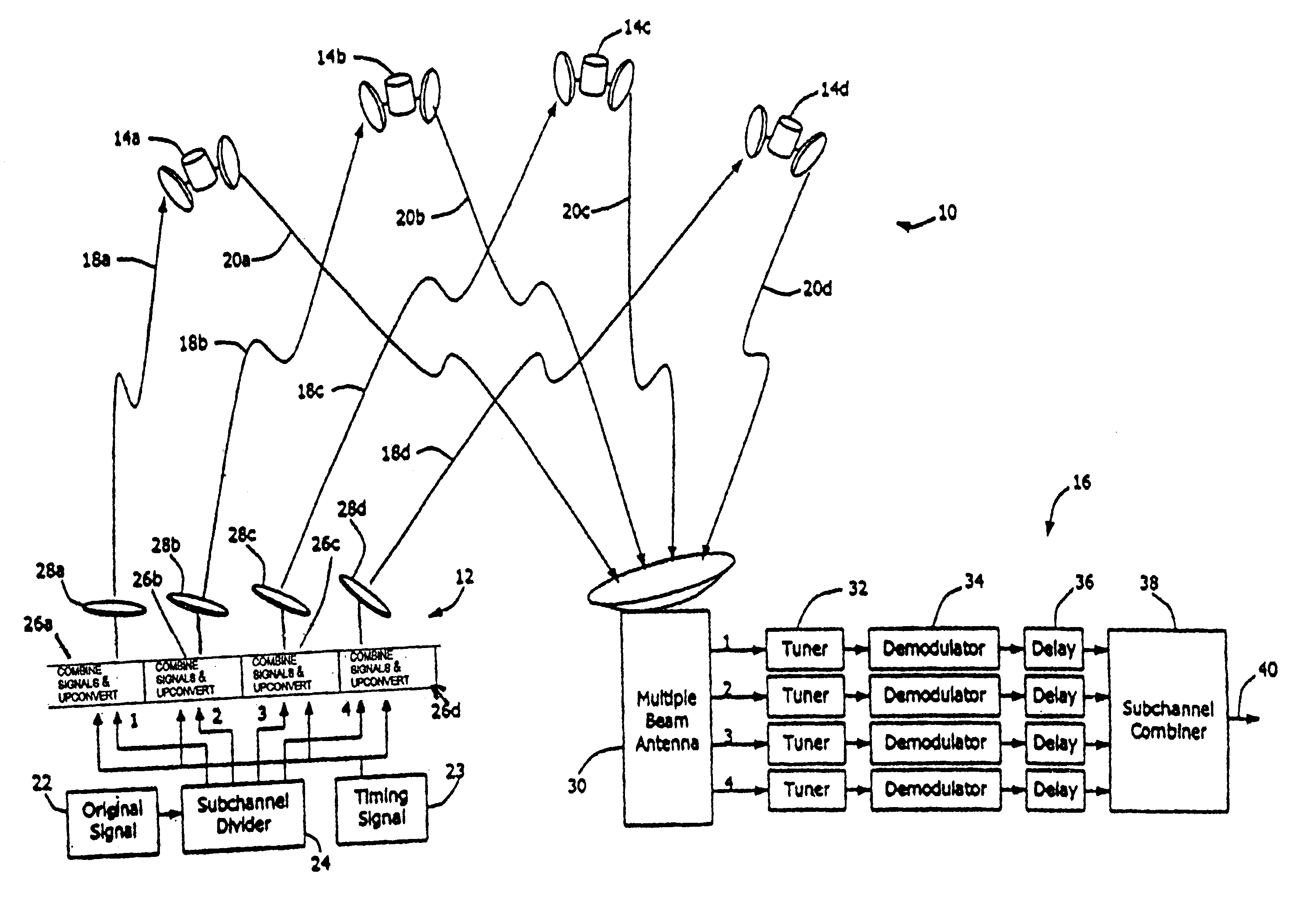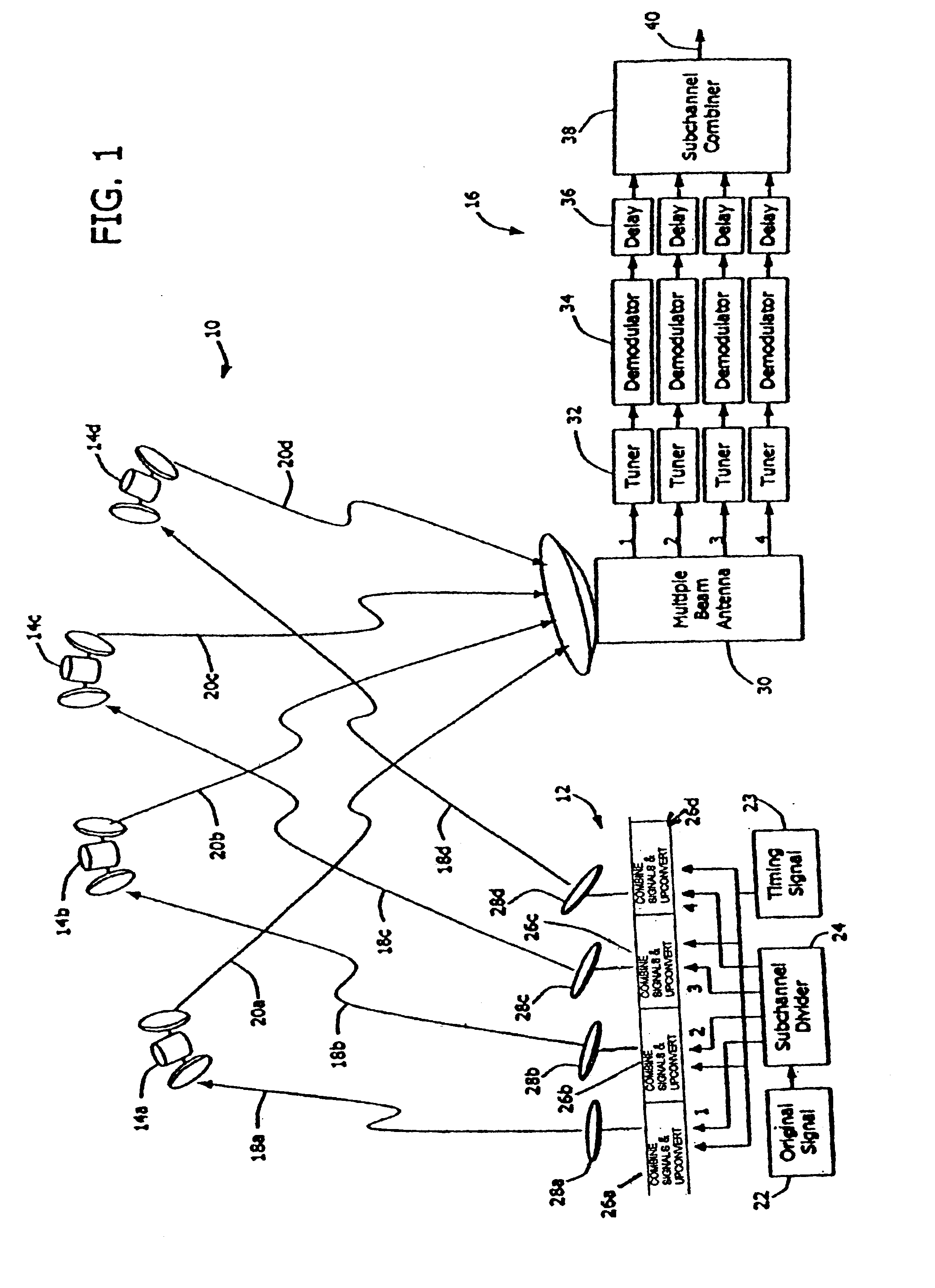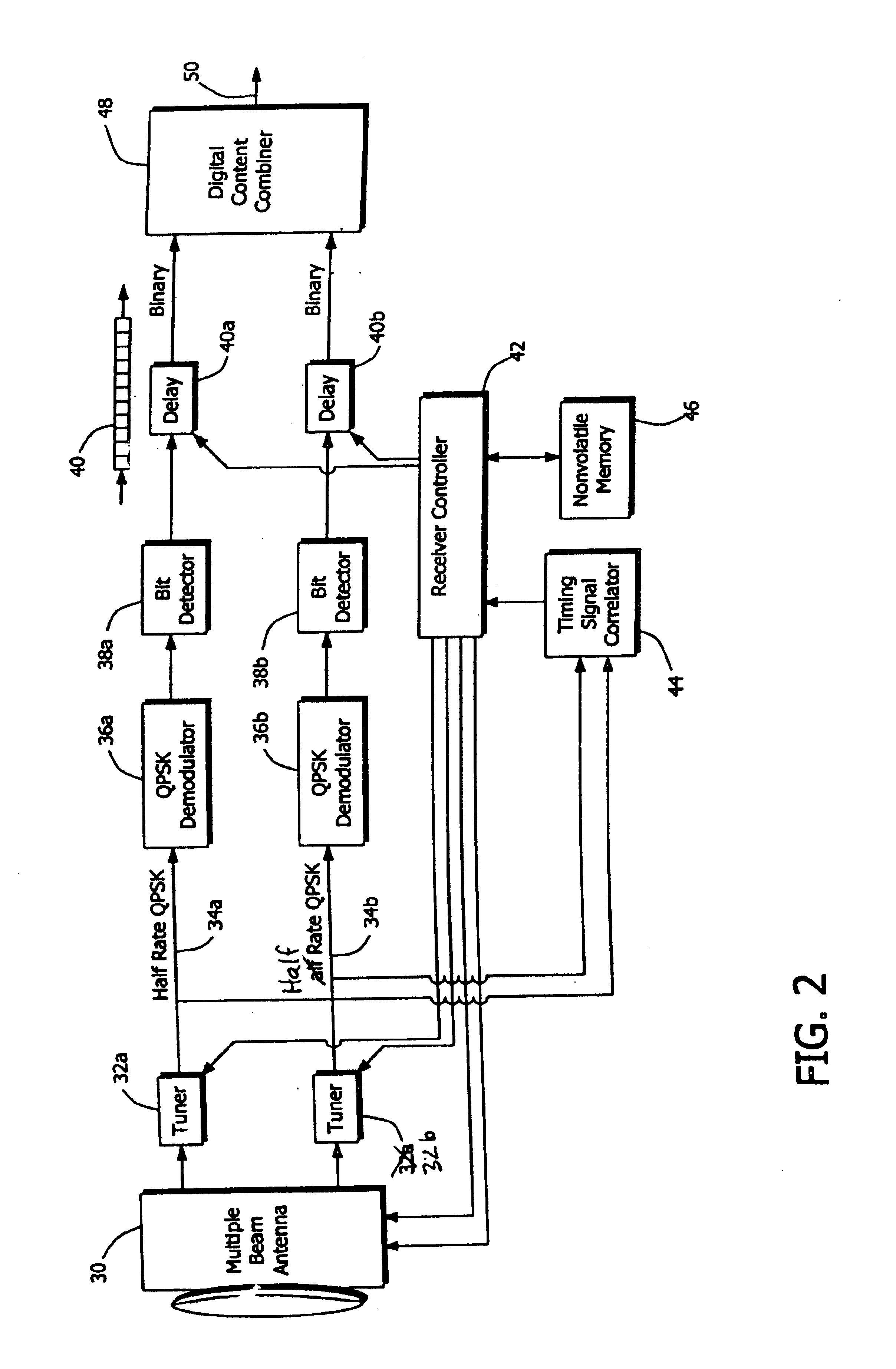System and method for combining multiple satellite channels into a virtual composite channel
- Summary
- Abstract
- Description
- Claims
- Application Information
AI Technical Summary
Benefits of technology
Problems solved by technology
Method used
Image
Examples
Embodiment Construction
Referring now to the drawings in which like reference numerals indicate like or corresponding elements over the several views, FIG. 1 shows an overview of the satellite communications system consisting of subsystems 12, 10, 16. Original signal 22 feeds subchannel divider 24 which separates the signal into a plurality of numbered subsignals. The exemplary system of FIG. 1 shows the number of subsignals to be four, but the present invention is not so limited. Subchannel divider 24 creates the subsignals by dividing original signal 22 employing one of two methods. A first method divides the signal on the basis of power. In this first method all the subchannel signals emerging from subchannel divider 24 are identical. A second method divides the signal on the basis of content. In this second method, each subchannel signal carries at least some information that is not carried by the other subchannels. The information content may be mutually exclusive or may overlap between subchannels, b...
PUM
 Login to View More
Login to View More Abstract
Description
Claims
Application Information
 Login to View More
Login to View More - R&D
- Intellectual Property
- Life Sciences
- Materials
- Tech Scout
- Unparalleled Data Quality
- Higher Quality Content
- 60% Fewer Hallucinations
Browse by: Latest US Patents, China's latest patents, Technical Efficacy Thesaurus, Application Domain, Technology Topic, Popular Technical Reports.
© 2025 PatSnap. All rights reserved.Legal|Privacy policy|Modern Slavery Act Transparency Statement|Sitemap|About US| Contact US: help@patsnap.com



